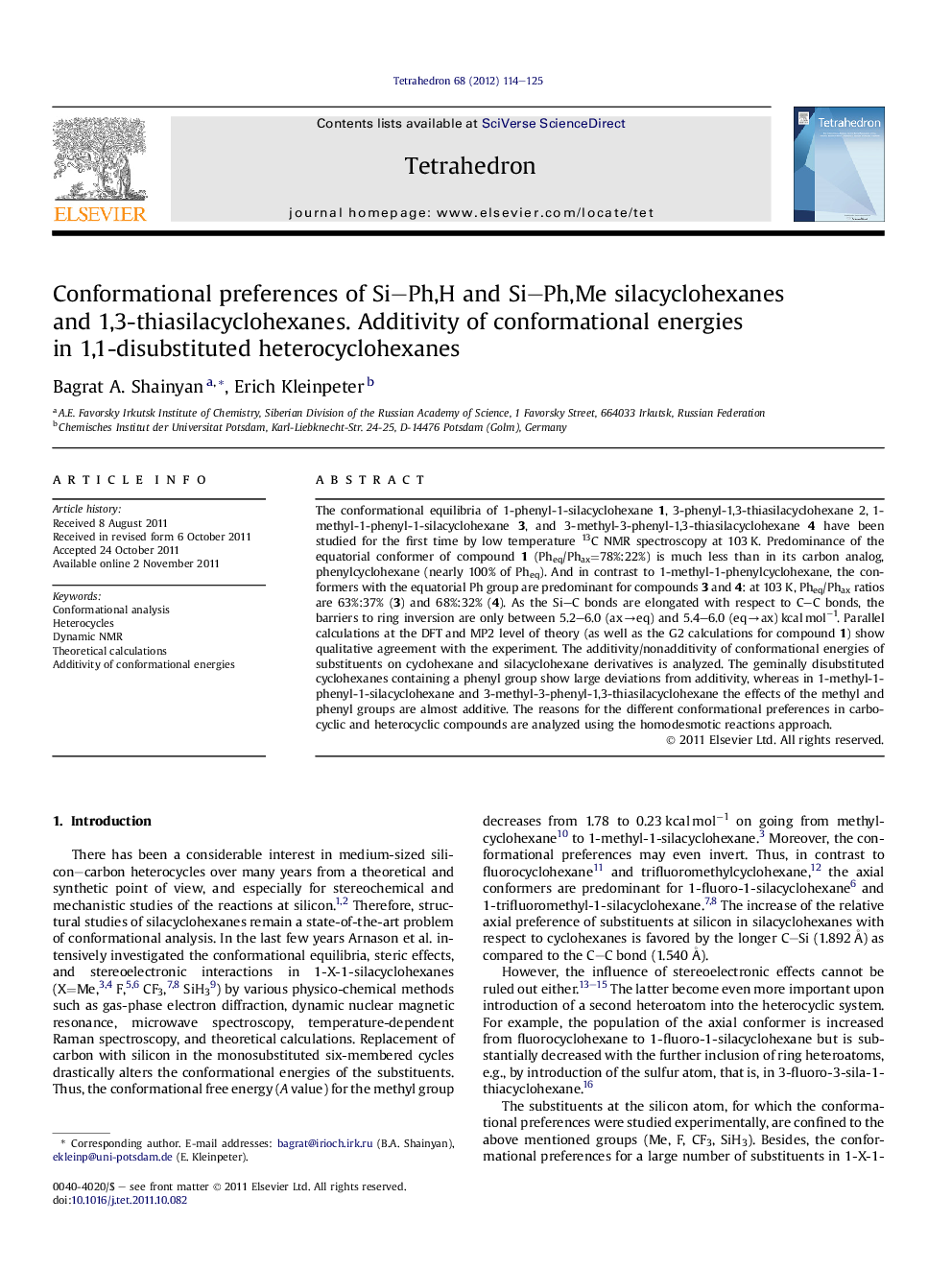| کد مقاله | کد نشریه | سال انتشار | مقاله انگلیسی | نسخه تمام متن |
|---|---|---|---|---|
| 5219177 | 1383350 | 2012 | 12 صفحه PDF | دانلود رایگان |

The conformational equilibria of 1-phenyl-1-silacyclohexane 1, 3-phenyl-1,3-thiasilacyclohexane 2, 1-methyl-1-phenyl-1-silacyclohexane 3, and 3-methyl-3-phenyl-1,3-thiasilacyclohexane 4 have been studied for the first time by low temperature 13C NMR spectroscopy at 103 K. Predominance of the equatorial conformer of compound 1 (Pheq/Phax=78%:22%) is much less than in its carbon analog, phenylcyclohexane (nearly 100% of Pheq). And in contrast to 1-methyl-1-phenylcyclohexane, the conformers with the equatorial Ph group are predominant for compounds 3 and 4: at 103 K, Pheq/Phax ratios are 63%:37% (3) and 68%:32% (4). As the Si-C bonds are elongated with respect to C-C bonds, the barriers to ring inversion are only between 5.2-6.0 (axâeq) and 5.4-6.0 (eqâax) kcal molâ1. Parallel calculations at the DFT and MP2 level of theory (as well as the G2 calculations for compound 1) show qualitative agreement with the experiment. The additivity/nonadditivity of conformational energies of substituents on cyclohexane and silacyclohexane derivatives is analyzed. The geminally disubstituted cyclohexanes containing a phenyl group show large deviations from additivity, whereas in 1-methyl-1-phenyl-1-silacyclohexane and 3-methyl-3-phenyl-1,3-thiasilacyclohexane the effects of the methyl and phenyl groups are almost additive. The reasons for the different conformational preferences in carbocyclic and heterocyclic compounds are analyzed using the homodesmotic reactions approach.
Conformational preferences of Si-heterocycles measured by low temperature NMR spectroscopy are drastically different from those in the related carbocycles. The reasons for this are examined using the homodesmotic reactions approach. Conformational effects are much closer to additivity in silacyclohexanes than in cyclohexanes. In both series, maximum deviations from additivity are observed for the Ph-substituted species.
Journal: Tetrahedron - Volume 68, Issue 1, 7 January 2012, Pages 114-125